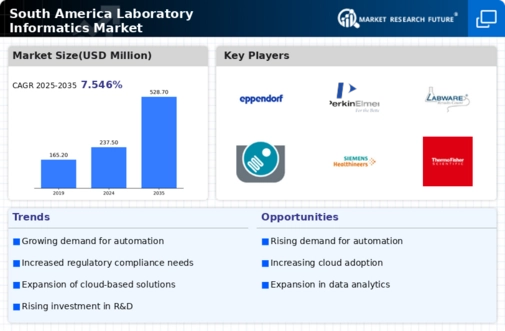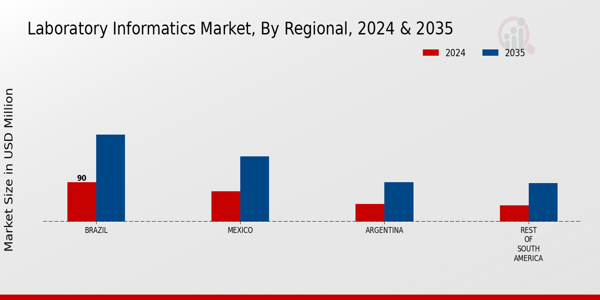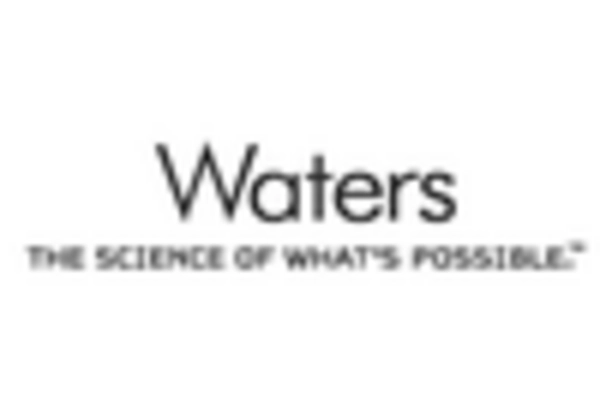The laboratory informatics market in South America is characterized by a dynamic competitive landscape, driven by technological advancements and increasing demand for efficient data management solutions. Key players such as Thermo Fisher Scientific (US), Abbott Laboratories (US), and Agilent Technologies (US) are at the forefront, each adopting distinct strategies to enhance their market presence. Thermo Fisher Scientific (US) focuses on innovation through the development of integrated laboratory solutions, while Abbott Laboratories (US) emphasizes partnerships with local entities to expand its reach. Agilent Technologies (US) is investing heavily in digital transformation initiatives, aiming to streamline laboratory workflows and improve data analytics capabilities. Collectively, these strategies contribute to a competitive environment that is increasingly centered around technological innovation and customer-centric solutions.
In terms of business tactics, companies are localizing manufacturing and optimizing supply chains to better serve the South American market. the competitive structure appears moderately fragmented, with several players vying for market share. However, major companies significantly influence the market as they leverage their resources and expertise to shape trends. This fragmentation allows niche players to emerge, but the dominance of established firms remains critical in determining market dynamics.
In October 2025, Thermo Fisher Scientific (US) announced a strategic partnership with a leading Brazilian research institution to develop advanced laboratory informatics solutions tailored to local needs. This collaboration is expected to enhance the company’s product offerings and strengthen its foothold in the region, reflecting a broader trend of localized innovation. Such partnerships not only facilitate knowledge transfer but also align product development with specific market demands, thereby enhancing competitive positioning.
In September 2025, Abbott Laboratories (US) launched a new cloud-based laboratory management system designed to improve operational efficiency for clinical laboratories across South America. This initiative underscores the company's commitment to digital transformation and positions it as a leader in providing cutting-edge informatics solutions. By integrating advanced analytics and real-time data access, Abbott aims to streamline laboratory processes, which could significantly enhance customer satisfaction and operational outcomes.
In August 2025, Agilent Technologies (US) expanded its presence in the South American market by acquiring a local software firm specializing in laboratory informatics. This acquisition is likely to bolster Agilent's capabilities in data management and analytics, allowing it to offer more comprehensive solutions to its clients. The strategic move reflects a growing trend of consolidation within the market, as companies seek to enhance their technological capabilities and broaden their service offerings.
As of November 2025, the competitive trends in the laboratory informatics market are increasingly defined by digitalization, sustainability, and the integration of artificial intelligence (AI). Strategic alliances are becoming more prevalent, as companies recognize the value of collaboration in driving innovation. Looking ahead, competitive differentiation is expected to evolve, shifting from price-based competition to a focus on technological advancements, innovation, and supply chain reliability. This transition suggests that companies that prioritize these areas will likely gain a competitive edge in the rapidly evolving landscape.



















Leave a Comment